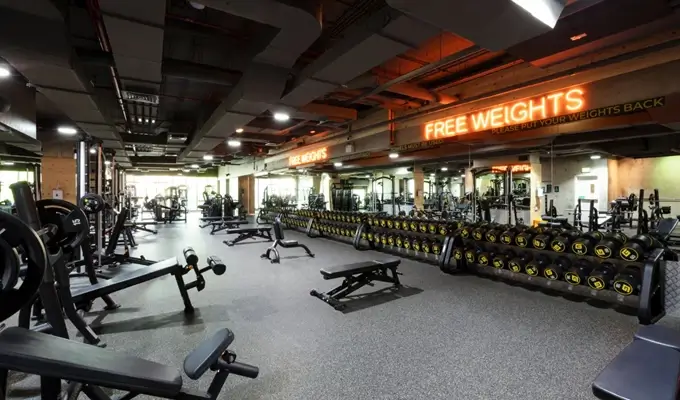The 90-30-50 TikTok Diet

SIGN UP FOR YOUR FREE DAY PASS TODAY!
If you’ve spent time on TikTok, you’ve likely noticed how quickly health trends gain traction.
The 90-30-50 diet plan is one of the latest to capture attention, with advocates claiming it can lead to weight loss and improved overall health.
Instead of focusing on calorie counting, this diet emphasizes macronutrients like protein and fiber. But can this approach suit everyone’s nutritional needs? Here's a closer look.
What is the 90-30-50 Diet Plan?
Created by wellness influencer and dietitian Courtney Kassis in 2023, the 90-30-50 diet is a simple yet structured eating plan. The rules?
Consume 90 grams of protein, 30 grams of fiber, and 50 grams of healthy fats daily.
Kassis developed this plan after being diagnosed with Hashimoto’s disease, a condition that made it difficult for her to lose weight and manage other health concerns.
In a TikTok video, Kassis highlighted the plan’s benefits, saying it supports weight loss, balances hormones, regulates blood sugar, and alleviates chronic health problems “within weeks, if not days.”
She also shared her personal success story, noting that she lost 15 pounds in two months and significantly improved her thyroid function.
Benefits of the 90-30-50 Diet Plan
This diet prioritizes protein and fiber, two components known for supporting weight loss and promoting satiety.
Protein
“The protein content may be sufficient to maintain muscle, repair tissues, and aid in satiety,” explains Catherine Gervacio, RND, a registered nutritionist and diet consultant for WOWMD.
General guidelines for protein intake suggest 0.8–1 gram per kilogram of body weight for adults. For someone weighing 165 pounds (75 kg), that’s around 60 grams of protein per day.
Fiber
Gervacio notes that the recommended fiber intake is 25 grams per day for women and 38 grams per day for men, but most people fall short of these targets.
The 90-30-50 diet’s emphasis on fiber can help regulate blood sugar, improve gut health, and keep you feeling full longer.
Healthy Fats
While the diet doesn’t specify where the fats should come from, registered dietitian Trista Best advises focusing on healthy fat sources like salmon, chia seeds, tofu, almonds, and avocado.
She also recommends limiting saturated fats and avoiding trans fats to maximize the health benefits.
Is the 90-30-50 Diet Plan Effective for Weight Loss?
Effectiveness largely depends on the individual. For some, the 90-30-50 balance may work well, but others may find it too rigid.
For example, 90 grams of protein might be excessive for someone with kidney disease, while 30 grams of fiber could overwhelm someone with a sensitive stomach.
Gervacio points out that the diet’s strict tracking requirements may make it feel overly restrictive, potentially leading to the "yo-yo effect" where weight is regained after stopping the diet.
Additionally, the plan doesn’t account for adequate calorie distribution or emphasize the quality of food, which could lead to overeating or nutritional imbalances.
Best reminds us that like many diets, the 90-30-50 approach isn’t a one-size-fits-all solution. Everyone has unique needs based on their age, gender, activity level, and health status.
Are There Benefits to a Structured Diet?
Structured diets like the 90-30-50 plan can serve as a starting point for individuals who feel overwhelmed by wide-ranging food choices.
By focusing on defined macronutrient goals, it may provide consistency and help with portion control.
However, Gervacio emphasizes the importance of customization.
A truly effective diet should be individualized, taking into account calorie requirements, macronutrient ratios, and personal preferences to ensure sustainability.
Tips for Following the 90-30-50 Diet Plan Safely
Instead of rigidly adhering to the 90-30-50 framework, use it as inspiration to incorporate more protein, fiber, and healthy fats into your daily meals. Here are some tips to help you get started:
- Add Lean Protein: Include options like chicken, tofu, fish, or eggs in each meal to meet your protein goals.
- Focus on Fiber-Rich Foods: Incorporate plenty of whole grains, vegetables, legumes, and fruits into your diet.
- Choose Healthy Fats: Opt for sources like olive oil, avocado, nuts, and seeds in moderation.
It’s always best to tailor your diet to your individual lifestyle and nutritional needs. Consult with a healthcare provider or dietitian to help determine what works best for you.
Would you consider giving the 90-30-50 diet plan a try? Share your thoughts or diet tips in the comments below—we’d love to hear from you!
Source: firstforwomen
The opinions shared in the GymNation blog articles are solely those of the respective authors and may not represent the perspectives of GymNation or any member of the GymNation team.
GET YOUR FREE TRIAL TODAY





























































































